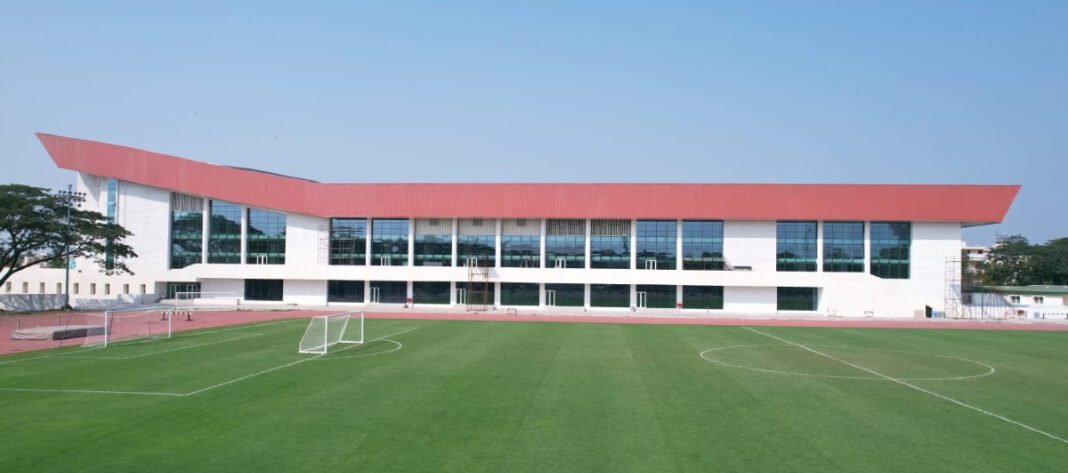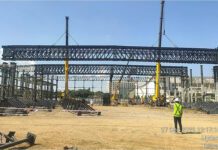The Kalinga Stadium project, a standout development in India, exemplifies innovative design and engineering as a world-class sports facility. The project involved the construction of the Athletic High-Performance Centre (HPC) and Aquatics Complex, two state-of-the-art centres designed to meet the rigorous demands of high-performance athletes. Sachin KC, COO, and Sadaf Quadri, Principal Engineer at SACPL, played pivotal roles in the structural engineering of these complexes, ensuring their stability, durability, and functional efficiency. Amol Mahajan, Director at Collage Design, spearheaded the overall architectural vision, ensuring that the facilities met functional requirements and created a visually stunning and inspiring environment for athletes and visitors.
Design Philosophy
The design brief for the Kalinga Stadium project was to create new, world-class facilities within the existing sports complex, to enhance its status as a premier international sports venue. The brief emphasised the need to design versatile and athlete-focused environments that support a wide range of sports activities while maintaining a cohesive aesthetic across the complex. This approach led to the development of five key facilities encompassing the Hockey HPC accommodation, residential sports science centre, tennis centre, aquatic complex, and athletic centre. Each facility was designed to ensure that athletes have access to the best possible training, recovery, and living spaces. The visually impressive structures also contribute to the stadium’s overall identity as a top-tier sports destination.
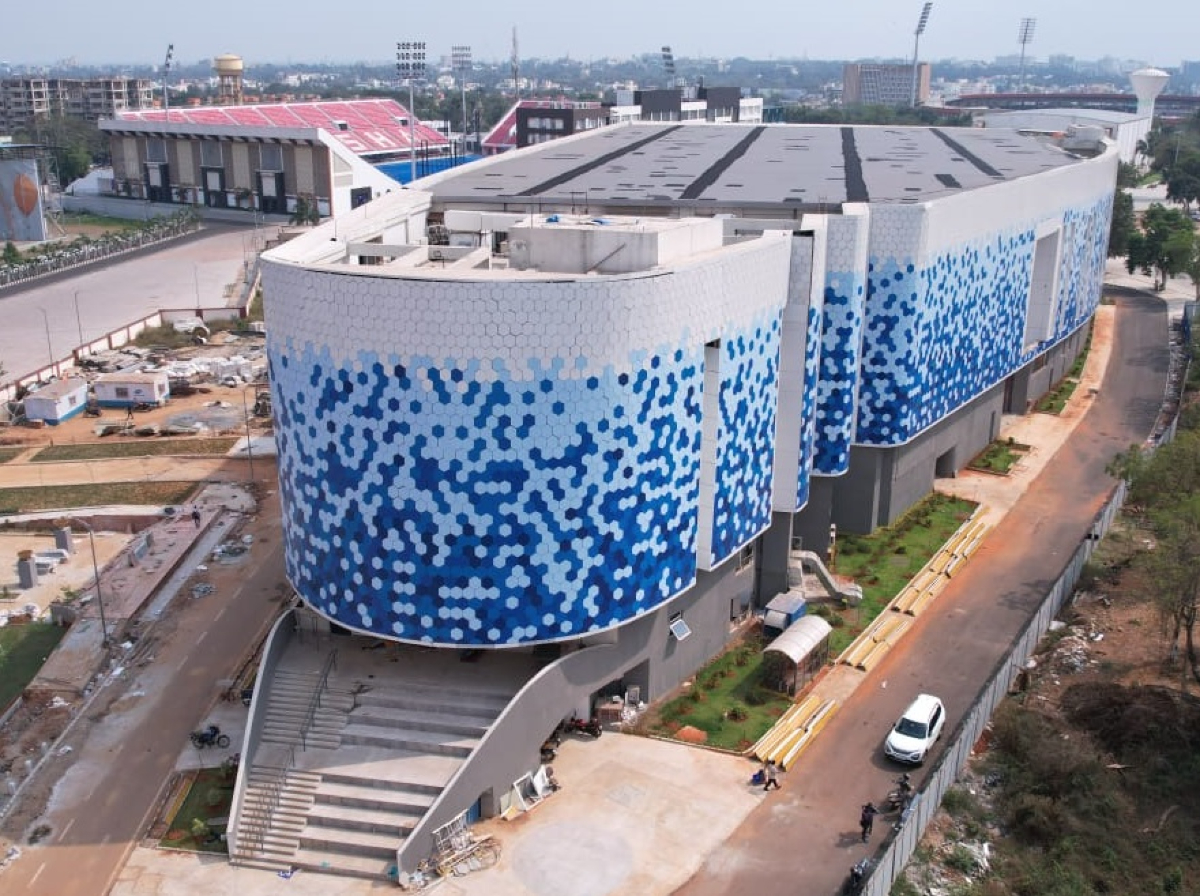
Furthermore, the Kalinga Stadium project has significantly shaped the approach to designing sports facilities for SACPL, reinforcing the importance of integrating advanced technology with athlete-centric spaces. The key design principles that emerged include creating a multifunctional space while also ensuring the use of advanced equipment and technology for performance enhancement.
The Athletic HPC integrates a residential unit with an indoor athletic stadium, to ensure that athletes have convenient access to training facilities. The design accommodates a variety of athletic activities, including a 200 m indoor oval track and field events such as shot put, pole vault, and long jump. The necessity to maintain an unobstructed space for these activities has led to the strategic placement of structural columns along the building’s periphery, to support a vast roof span of approximately 70 m. This design not only meets the functional requirements but also aligns with the architectural vision, providing an effortless and uninterrupted space for athletes to train year-round.
Similarly, the Aquatics HPC is designed with a focus on functionality and performance. It comprises an Olympic-sized swimming pool and a practice pool, centrally positioned to optimise space utilisation. The structural design is mindful of the need for open space above the pool. The roof spans 50 m, covering the aquatic facilities and enabling continuous training regardless of weather conditions.
Both structures have been engineered to withstand higher basic wind speeds of 55 m per second, exceeding the standard code requirement of 50 m per second. This consideration is crucial given the location’s susceptibility to cyclonic conditions, ensuring the safety and durability of the complexes. The collaborative efforts of the sports architecture firm Collage Designs Pvt Ltd, SACPL, the Structural Consultant firm and Larsen & Toubro, the contracting firm have culminated in a pioneering project that sets a new benchmark for sports infrastructure in India, to potentially enhance the country’s competitive edge in the international sports arena.
 Dual Approach
Dual Approach
The client had directed to limit the usage of structural steel elements due to the proximity of the sea and the location’s susceptibility to cyclonic conditions. Different construction materials and structural schemes were explored to complement the architectural design and budgetary aspects. Some of the major options were as follows: .
Scheme 1 – Entire Structure in Structural Steel
Scheme 2 – Hybrid Structure – All structural members in RCC, except the roof supporting members in structural steel (Long-span trusses).
Scheme 3 – Hybrid Structure – All structural members in RCC, except the roof supporting members in structural steel (Space frame).
The decision to opt for Scheme 2, a hybrid structure with reinforced concrete for the main structural members and structural steel for the long-span roof trusses, is a strategic choice that balances the architectural vision with practical considerations. This approach mitigates the risk of corrosion due to the saline sea air and the structural vulnerability during cyclonic conditions, which are critical factors given the project’s coastal location. Moreover, the use of reinforced concrete (RCC) for most of the structure offers durability and cost-effectiveness, while the selective use of structural steel for the roof allows for the desired architectural expression and functionality. This scheme also aligns with the need for faster construction, as structural steel components can be prefabricated and assembled on-site, to potentially reduce the overall project timeline.
The organisation of space within the Athletic HPC and Aquatics Complex was meticulously planned to enhance both functionality and user experience. The Athletic HPC features India’s first fully air-conditioned 200 m indoor track, certified by World Athletics (formerly known as IAAF). This track, along with the adjacent weightlifting area, 100 m practice track, and gymnasium, is strategically positioned to ensure a flawless transition between various training activities and to foster an environment that maximises athletic performance.
Similarly, the Aquatics Complex was designed to meet the stringent standards set by World Aquatics (formerly known as FINA). The Olympic-size swimming pool, combined with advanced training tools such as motion-sensing cameras, ensures that athletes have access to the best facilities for refining their techniques. The careful zoning of each area within these complexes reflects a deep understanding of the athletes’ needs, to provide a cohesive and supportive environment for training, recovery, and competition.
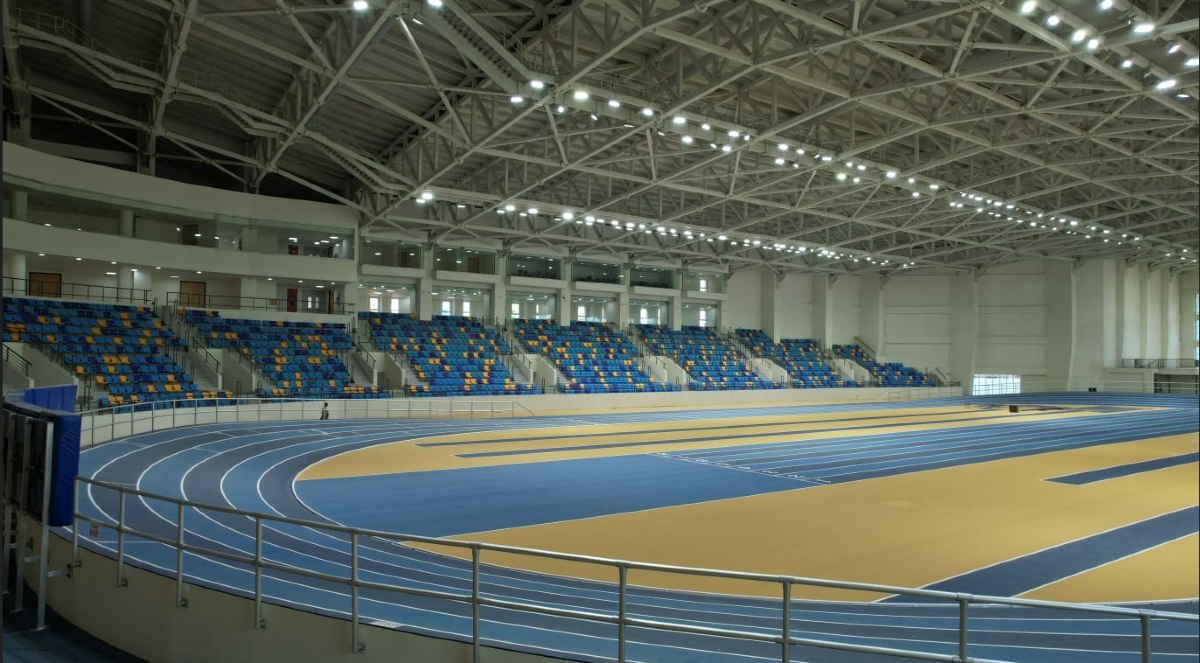 Structural Integrity
Structural Integrity
In structural engineering, gravity loads are effectively countered by the robust combination of cast-in-situ reinforced concrete (RC) beam-slab systems, columns, walls, and truss systems. These components work in unison to support the weight of the structure and any permanent fixtures within it. For lateral loads, which can arise from wind or seismic activity, moment-resisting frames, reinforced with concrete walls and supplemented by steel bracings, provide the necessary resistance. This dual approach ensures the stability and integrity of buildings, safeguarding them against both vertical and horizontal forces.
The design and management of large-span trusses, especially those reaching spans of 70 m and 50 m, present a complex engineering challenge. Factors such as increased wind speeds, the addition of solar panels, catwalks, lighting, cameras, and maintenance loads require careful consideration to ensure structural integrity and cost-effectiveness. Optimising the depth of these trusses is critical to control costs associated with the building’s facade. Successfully limiting to an optimal truss depth was one of the key challenging features.
Construction Efficiency
The selection of SHS sections with steel grades E350 and E250 is a strategic choice for structural projects. These grades, as per IS 2062 standards, offer a balance of high tensile strength and good weldability, making them suitable for a variety of applications. Utilising readymade sections benefits the project from cost-effectiveness and enhanced efficiency, as it reduces the need for extensive prototyping and allows for quicker assembly.
The design of the building adhered to a 2-hour fire rating, in compliance with the National Building Code (NBC), and did not require additional fire treatments for the steel framework due to its height. Codal fire rating criteria were applied to the general RCC design. The strategic placement between the top and bottom chords supported the structure while also integrating the HVAC system and maintenance catwalks, to optimise the use of space and facilitate access for regular upkeep.
Moreover, the successful and timely completion of the project was a result of meticulous planning, strategic design, and judicious material selection. Having a leading contractor also fortified the process, ensuring that each phase of construction was executed with precision and expertise. In particular, the prefabrication of structural steel components off-site significantly reduced the construction timeline, allowed rapid assembly on-site and minimised delays. This aspect, in conjunction with a collaborative team effort, was instrumental in adhering to the project’s scheduled timeline.
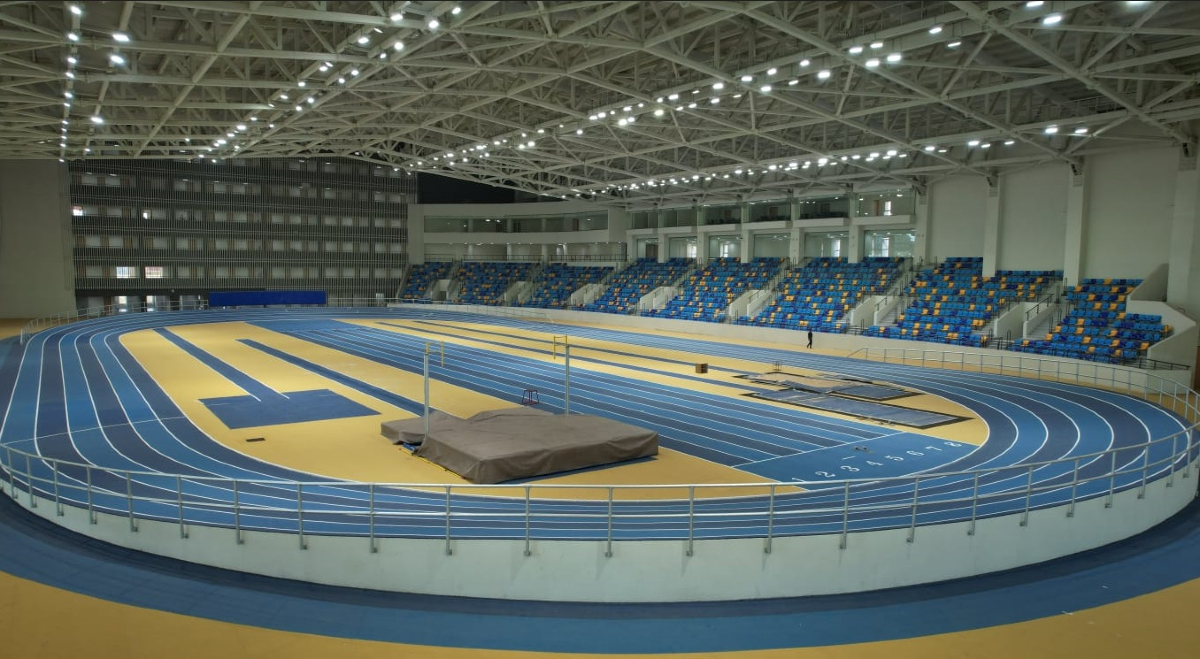 Steel Harmony
Steel Harmony
Structural steel has indeed revolutionised the construction industry with its remarkable attributes. Its high strength-to-weight ratio allows for the creation of long-span structures that are durable and aesthetically pleasing. The prefabrication of steel components off-site contributes to a more efficient and time-bound construction process, significantly reducing the overall project timeline.
Moreover, the adaptability of structural steel to various architectural designs fulfils the creative aspirations of architects without compromising on safety and functionality. The precision in the fabrication of steel components ensures that the design intent is met, thereby satisfying the stringent requirements of modern construction standards. The use of structural steel also supports sustainable construction practices, as it is recyclable and often sourced from recycled materials, to reduce the environmental impact of new constructions. The economic benefits of using structural steel are also significant, as the speed of construction leads to a quicker return on investment, and the reduced need for maintenance lowers the lifetime cost of the structure.
The integration of RCC and structural steel in sports facility construction represents a strategic fusion of materials that optimally satisfies both aesthetic and functional requirements. Structural steel offers unparalleled benefits in the creation of sports facilities, where its ability to span long distances without support pillars ensures unobstructed views for spectators. This characteristic is essential for fan-friendly stadium designs that prioritise clear sightlines. Moreover, the adaptability of steel allows for innovative architectural expressions, to enable the creation of signature structures that are not only operationally efficient but also visually striking.
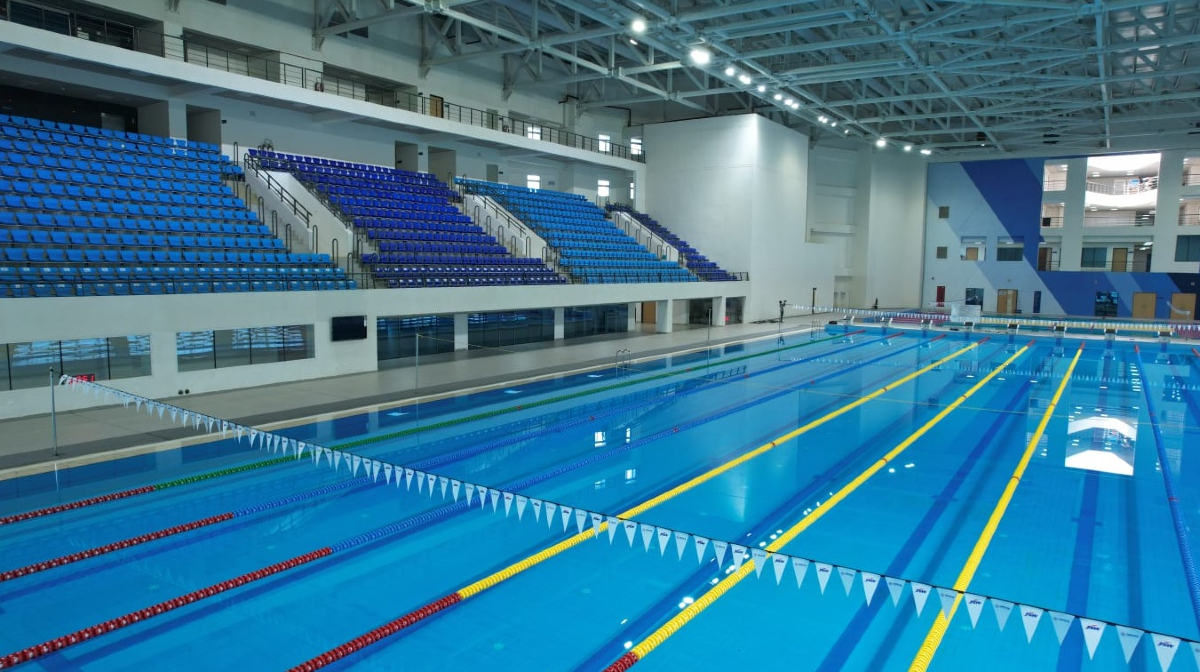 In the context of sports engineering, SACPL’s past experiences have demonstrated the substantial role of structural steel. It facilitates the construction of expansive, column-free spaces, which are ideal for accommodating the wide array of activities housed within modern sports complexes. From gymnasiums to aquatic centres, the versatility of steel supports diverse design requirements while also providing the strength and durability needed to withstand the dynamic loads associated with sports events. The economic benefits are also significant, as the use of steel can lead to lighter foundations and overall cost savings in the construction process.
In the context of sports engineering, SACPL’s past experiences have demonstrated the substantial role of structural steel. It facilitates the construction of expansive, column-free spaces, which are ideal for accommodating the wide array of activities housed within modern sports complexes. From gymnasiums to aquatic centres, the versatility of steel supports diverse design requirements while also providing the strength and durability needed to withstand the dynamic loads associated with sports events. The economic benefits are also significant, as the use of steel can lead to lighter foundations and overall cost savings in the construction process.
Furthermore, the sustainability aspect of steel cannot be overlooked. It is often sourced from recycled materials and is itself fully recyclable, which aligns with the growing emphasis on environmentally responsible construction practices. As sports facilities continue to evolve as community hubs and examples of modern engineering, the selection of materials reflects a growing focus on sustainability and innovation.
Therefore, the decision to employ a hybrid structural design that incorporates both RCC and structural steel is a prime example of the evolving nature of sports facility construction. As the construction industry continues to innovate, the role of structural steel in the creation of sports facilities is poised to expand, solidifying its status as a material of choice for architects and engineers alike.
Quote
“The Kalinga Stadium project was a remarkable journey for our team at SACPL. Collaborating with exceptional architects and engineers on such a complex and innovative project was invaluable. The client’s vision for a world-class sports facility pushed the boundaries of structural engineering, requiring innovative solutions for large-span structures and complex designs. The project’s successful completion is a result of our team’s dedication and expertise, working effectively with our partners.”
– Sachin K C, COO, and Sadaf Quadri, Principal Engineer, SACPL
“The Kalinga Stadium project has been a cornerstone achievement for our team at Collage Design. The opportunity to create facilities that not only meet international standards but also push the boundaries of sports infrastructure in India has been immensely rewarding. This project challenged us to innovate continuously and stay ahead of the curve, particularly in integrating cutting-edge technology and ensuring that the spaces we designed truly cater to the needs of world-class athletes. This project not only exemplifies our commitment to innovation and excellence but also sets a benchmark for future sports facility designs that we aspire to surpass.”
– Amol Mahajan, Director, Collage Design
Fact File
Project: Expansion of Kalinga Stadium Infrastructure, Bhubaneshwar
Client: Sports Department, Odisha
Architect: Collage Designs Pvt Ltd
Structural Consultant: SACPL
Project Management: Industrial development corporation, Odisha (IDCO), Egis India
Steel Fabricator: Zetwerk Engineering
Steel Supplier: Jindal Steel & Power
Tonnage: 1800 MT
Status: Completed


